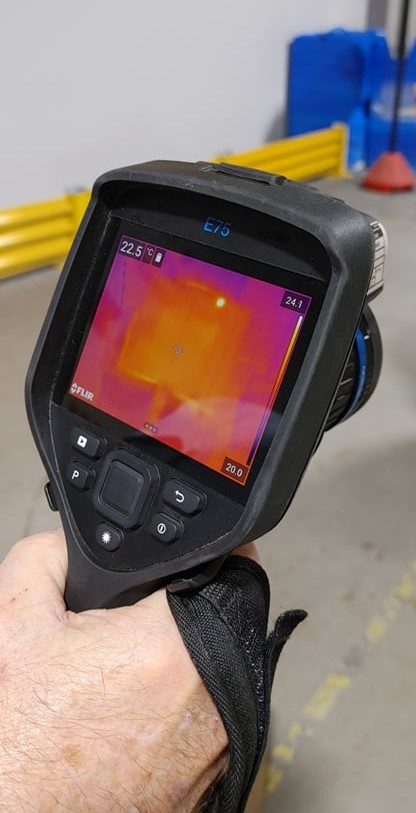 Each of our clients has their own preference as to the method by which rodents once detected are dispatched. In each case, however, the pallet which contains the rodent infestation must be isolated from remaining product and except in extreme cases, no effort is made to eliminate the rodents or to separate contaminated product within the facility itself. In each case the pallet must be moved, either to an off-premises trailer or to a remote and segregated location within the building. A busy day, with lots of rodent activity can result in a hundred or more “hits” by the dogs.
Each of our clients has their own preference as to the method by which rodents once detected are dispatched. In each case, however, the pallet which contains the rodent infestation must be isolated from remaining product and except in extreme cases, no effort is made to eliminate the rodents or to separate contaminated product within the facility itself. In each case the pallet must be moved, either to an off-premises trailer or to a remote and segregated location within the building. A busy day, with lots of rodent activity can result in a hundred or more “hits” by the dogs.
To reduce labor costs and increase the efficiency of the both the dogs and the ultimate method of disposal, the dogs’ “hits” are verified through the use of FLIR thermal imaging cameras and inspection with ultra-violet equipment to help confirm the presence of rodent infestation in the effected and surrounding pallets. On occasion, additional dogs are used to confirm findings and contain any possible escapees.
Thermal imaging can also be used as a stand-alone method to locate free-running rodents within the wooden pallets themselves and in utility areas of the warehouse facility. When a nest is located deep inside the pallet of product, only a heat signature is visible to the camera. In other cases, the FLIR unit makes the presence of the animals themselves much more visible.
Each of our regional teams is equipped with a thermal imaging camera and is trained in its use. In addition, several of our clients have their own units and use them regularly to detect infestations. The cameras do not replace the sensitivity of the dogs which can reach stored product that is inaccessible to the cameras. They serve as confirmation of rodent presence to reduce the number of pallets moved, fumigated or broken down. Once verified, pallets are moved at the direction of the client supervisor.
Many of the “hits” made by the canines are on scent from unoccupied nests or rodents that are “on the move” while the search is in progress. The combined use of ultra-violet and thermal imaging technology can reduce the number of pallets moved by 50% or more, a significant saving in labor costs and overhead.
In some facilities, thermal imaging can also be used to pinpoint rodent infestation within walls, equipment and other structures as well as points of ingress/egress in the building itself.